Govind Pashu Vihar National Park is a beautiful wilderness sanctuary recognized for its diverse wildlife, breathtaking scenery, and adventurous hiking trails. Established in 1955, this park spans 958 square kilometers and was designated a national park in 1990. It provides a critical habitat for endangered animals like the Snow Leopard and Himalayan bear, as well as stunning views of snow-capped peaks, lush forests, and alpine meadows.
A memorable experience awaits you at Govind Pashu Vihar, whether you’re a nature lover, animal enthusiast, or trekker.
Everything you need to know is included in this guide, from trekking routes and travel advice to geography, wildlife, and much more.
Table of Contents
Govind Pashu Vihar National Park: Overview and History

The natural diversity of Govind Pashu Vihar National Park, as well as its relevance to regional cultural history and India’s larger conservation efforts, make it a historically significant place.
Located in the upper Garhwal Himalayas, the region has long been inhabited and traveled by indigenous groups like the Bhotiya and Jaunsari, whose traditional means of subsistence included trading over Himalayan passes, collecting herbal medicines, and transhumance. Their harmonious coexistence with the environment produced a legacy of sustainable land use that influenced the area’s natural makeup.
During the British colonial period, woods and high-altitude valleys were valued for their timber and wildlife. The foundation for contemporary ecological preservation was laid by the British, who implemented early conservation measures, including controlled hunting areas and forest management programs. This colonial-era impact may still be seen in many woodland pathways, inspection routes, and rest stops.
Following its independence, the Indian government worked to protect ecologically significant areas. The sanctuary, which was created in 1955 and subsequently named after the well-known politician and freedom fighter Govind Ballabh Pant, came to represent India’s dedication to environmental preservation after independence.
Its significance in safeguarding high-altitude biodiversity, particularly endangered species like the snow leopard and Himalayan Monal, was further reinforced in 1990 when it was given the status of a national park.
Geography and Location
The park is located in the upper Tons River valley, which is one of the Yamuna River’s major tributaries. The park’s river systems are contributed by the river Tons, which originates from the Bandarpunch Glacier. What defines the beauty of the landscape is:
- Deep valleys formed by rivers due to glacial activity
- The high-altitude plateaus and steep ridges
- Alpine bugyals, or grasslands, such as Har Ki Dun
- Snowfields near peaks like Black Peak (6,387 m)
Protected Areas
The park is ecologically related to:
- Sangla Valley in Himachal Pradesh from the north.
- Gangotri National Park from the east.
- Kedarnath Wildlife Sanctuary from southeast.
Closest human settlements
- Sankri, the final motorable settlement and the starting point for hikes, is 72 kilometers from the park center.
- Purola (50 kilometers) is the closest town with ATMs and medical services.
- Dehradun, which is 200 km away, is a metropolitan city from where you can get trains and flights.
Climate and Best Time to Visit Govind Pashu Vihar National Park
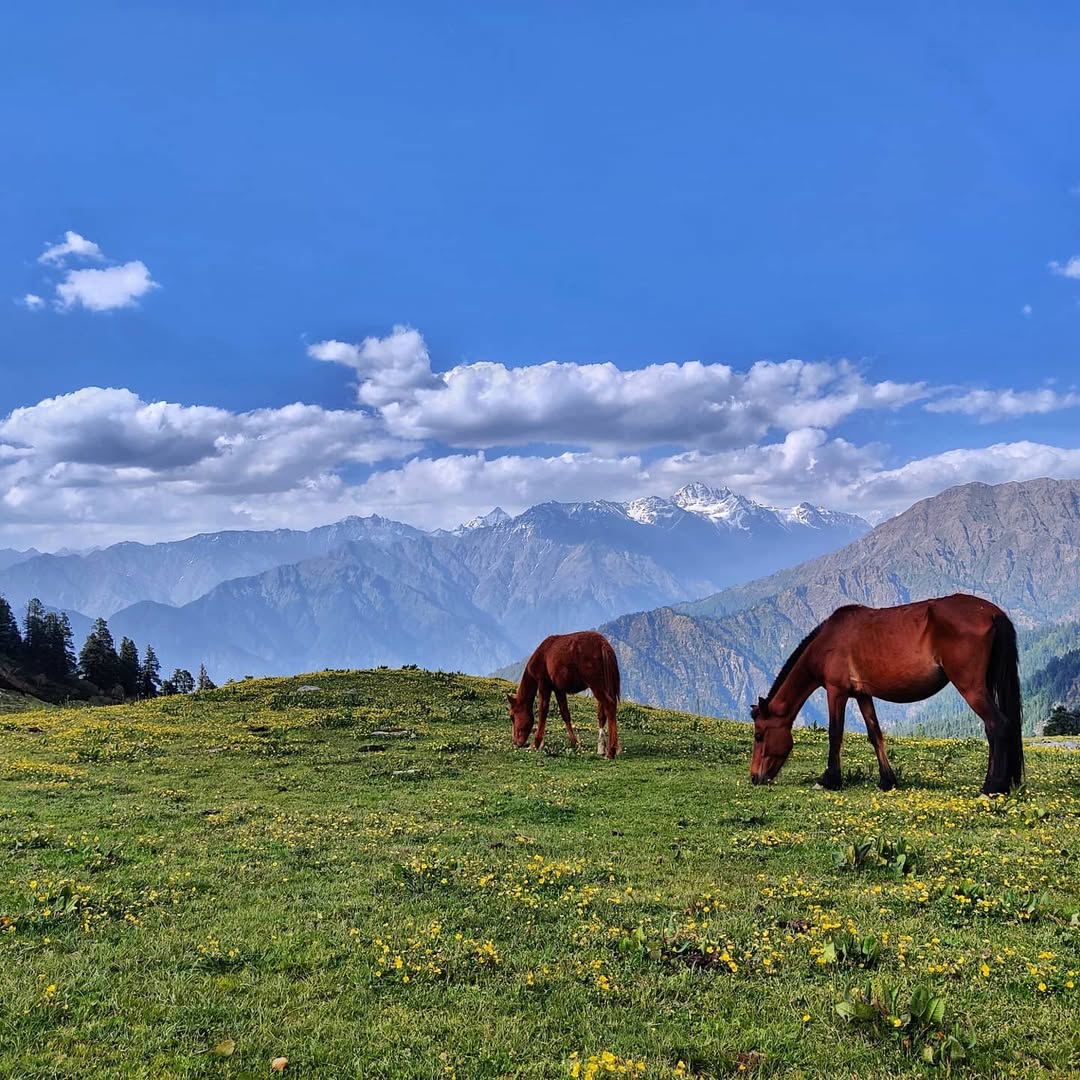
There are three distinct seasons at Govind Pashu Vihar National Park, and each one offers tourists something different. Due to the park’s high height (1,300m to 6,315m), there are notable temperature differences between day and night as well as across altitudes.
Seasonal Breakdown
Summer (April to June)
The temperature ranges from 10°C to 25°C during the day and drops to 5°C at night.
Conditions:
- The most popular time of year for trekking with consistent weather.
- Green meadows are revealed as snow melts at mid-altitudes.
- Perfect for observing nature as animals go into lower valleys.
Special Observations:
- Forests are painted crimson by rhododendron flowers in April and May.
- Flocks of birds migrate to Bugyals during shepherd migrations in June.
Monsoon (July to September)
12 to 20 degrees Celsius with a lot of humidity
Conditions:
- Landslides on access routes are caused by heavy rainfall (1500 mm on average).
- In woodlands, fog makes it harder to see.
- Many pathways become hazardous and slick due to the emergence of leeches.
Park Condition:
- Officially, the majority of hiking routes are closed.
- Access to Sankri village is restricted.
Winter (October to March)
The temperature ranges from -5°C to 10°C during the day and drops to -15°C at night.
Conditions:
- Significant snowfall from December to February over 3,000 meters
- Frozen streams create stunning ice formations.
- Best time to watch snow leopards (peak sightings in January)
Accessibility Issues:
- In January, Sankri is covered in snow.
- Requires specialized snow equipment and experienced guides.
Best Time to Visit
| Purpose | Recommended Months | Notes |
| Trekking | May-June, Sept-Oct | Stable weather windows |
| Wildlife | Nov-Dec | Pre-winter animal activity |
| Photography | Oct-Nov | Clear skies + autumn colors |
| Snow Sports | Jan-Feb | Requires planning before the journey |
Expert Advice: For the Har Ki Dun trek, aim for late May, when the meadows turn green, but the peaks are still covered in snow. The monsoon season (July–August) is not advised for anybody other than researchers with specific permissions.
Flora: The Green Wealth of Govind Pashu Vihar National Park
A remarkable altitudinal range of flora, including subtropical species and high-altitude alpine variety, can be found at Govind Pashu Vihar National Park. With every 500 meters of elevation rise, the park’s vegetation undergoes a significant shift, forming unique biological zones that are home to a variety of plant species.
Forest Zones and Dominant Species
1. Subtropical Zone (1,300–2,000m)
Dominant Trees:
- Banj oak (Quercus leucotrichophora)
- Rhododendron (Rhododendron arboreum) is the state tree of Uttarakhand.
- Himalayan bamboo (Danepanostachyum falcatum)
Small Plants:
- Strawberry wild (Fragaria nubicola)
- Himalayan nettle (Girardinia diversifolia) is used as a fiber
2. Temperate Zone (2,000–3,000m)
Coniferous Forests:
- Himalayan cedar (Cedrus deodara) or the sacred ‘Deodar.’
- Blue pine (Pinus wallichiana)
- West Himalayas fir (Abies pindrow)
Medicinal Plants:
- The Indian aconite (Aconitum heterophyllum) is a rare and endangered herb
- The Himalayan yew (Taxus wallichiana) contains chemicals that have anti-cancer properties.
3. Subalpine/Alpine Zone (3,000m+)
Dwarf Vegetation:
- Juniper Shrubs (Juniperus communis)
- Poa alpina, or alpine grasses
Rare Flowers:
- The Brahma Kamal (Saussurea obvallata) is a sacred flower that blooms at night.
- Blue poppies, Meconopsis aculeata only grow over 3,500 meters.
Ecological Importance
- Carbon Sink: Forests of old-growth deodar retain more than 300 tons of carbon/hectare.
- Medicinal Wealth: More than 120 kinds of Ayurvedic plants have been identified
- Climate Indicators: Rhododendrons that bloom early signal warm trends in climate.
Conservation and Threats
- Harvesting medicinal plants such as Kutki (Picrorhiza kurroa) illegally
- Climate Impact: Every ten years, alpine species rise 30 meters
Safety precautions:
- No-pluck areas for flowers that are endangered
- Community-based herb cultivation programs
Fauna: Wildlife Sanctuary of the Himalayas
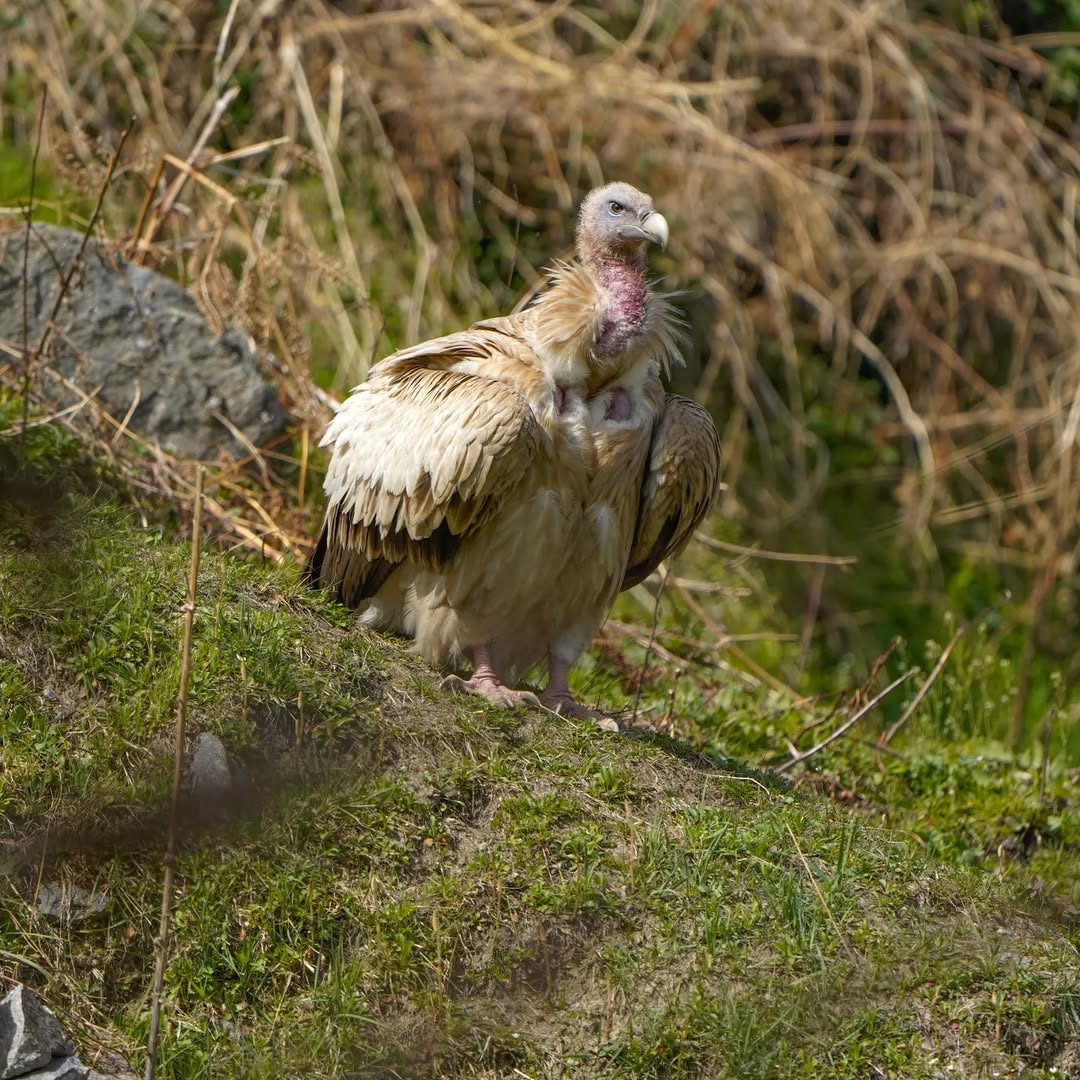
Govind Pashu Vihar National Park provides a crucial habitat for some of the most stunning animals in the Himalayas. From the famous snow leopard to endangered pheasants and Himalayan bears, the park’s varied ecosystems are home to an amazing variety of wildlife.
Among these, the elusive snow leopard is particularly noteworthy as a symbol of the biological diversity of the area and as a conservation priority.
The snow leopard (Panthera uncia) is the park’s most celebrated resident, who resides at higher altitudes (3,000-4,500m). These majestic cats:
- Prefer a rough, steep area close to Black Peak and Bandarpunch.
- Have geographic ranges of 50-100 sq km per individual
- Himalayan tahr and blue sheep are the major sources of their
- Mostly active at sunrise and sunset (crepuscular behavior).
Comprehensive Protection Programs
The park has taken many steps to protect its population of snow leopards:
1. The Government of India’s Project Snow Leopard
- In 12 villages, a community of anti-poaching squads was established.
- Livestock insurance that covers 80% of herder losses was put into place.
- Created Snow Leopard Conservation Committees
2. SECURE Himalaya (UNDP-GEF Project)
- 45 motion-sensor cameras have been placed throughout important ecosystems.
- Staff members were trained in smart patrolling with the help of the M-STrIPES app.
- Conducts yearly genetic research using scat collection
3. Habitat Management
- Blue sheep were reintroduced in Ruinsara Valley to increase the number of prey.
- The construction of 120 predator-proof corrals resulted in a decrease in livestock attacks.
- Artificial salt licks were created to focus on prey species.
Additional Notable Animals
The variety of wildlife in the park goes beyond snow leopards:
Mammals
- Himalayan Brown Bear (Vulnerable): Commonly seen in mountain meadows.
- Musk Deer (Endangered): inhabits deep fir woods.
- Himalayan Serow (Near Threatened) prefers rocky rocks.
Birds
- Western Tragopan (HP State Bird): Only 5000 left in the world.
- Himalayan Monal: The males display colored feathers
- Bearded Vulture: These scavengers break bones by dropping them from height
Community-Led Conservation
Local communities play a vital role in protection efforts:
Visitor Participation Opportunities
- You can use the Himalayan Wildlife Watch app to report sightings.
- Participate in winter scat collection initiatives.
- Follow responsible viewing guidelines (300m distance minimum)
Technology and Research
- Innovative techniques improve conservation:
- Camera trap photos are analyzed using AI-powered PAWS software.
- Inaccessible locations are surveyed using thermal drones.
- Range alterations are monitored by climate impact studies
Conservation Success
- Poaching has decreased since 2015.
- Snow leopard cub sightings have increased since 2020.
By combining ecological preservation with sustainable community development, Govind Pashu Vihar has become a model for high-altitude conservation. The park’s initiatives show how focused actions may contribute to ensuring the survival of Asia’s most mysterious large feline.
Major Attractions
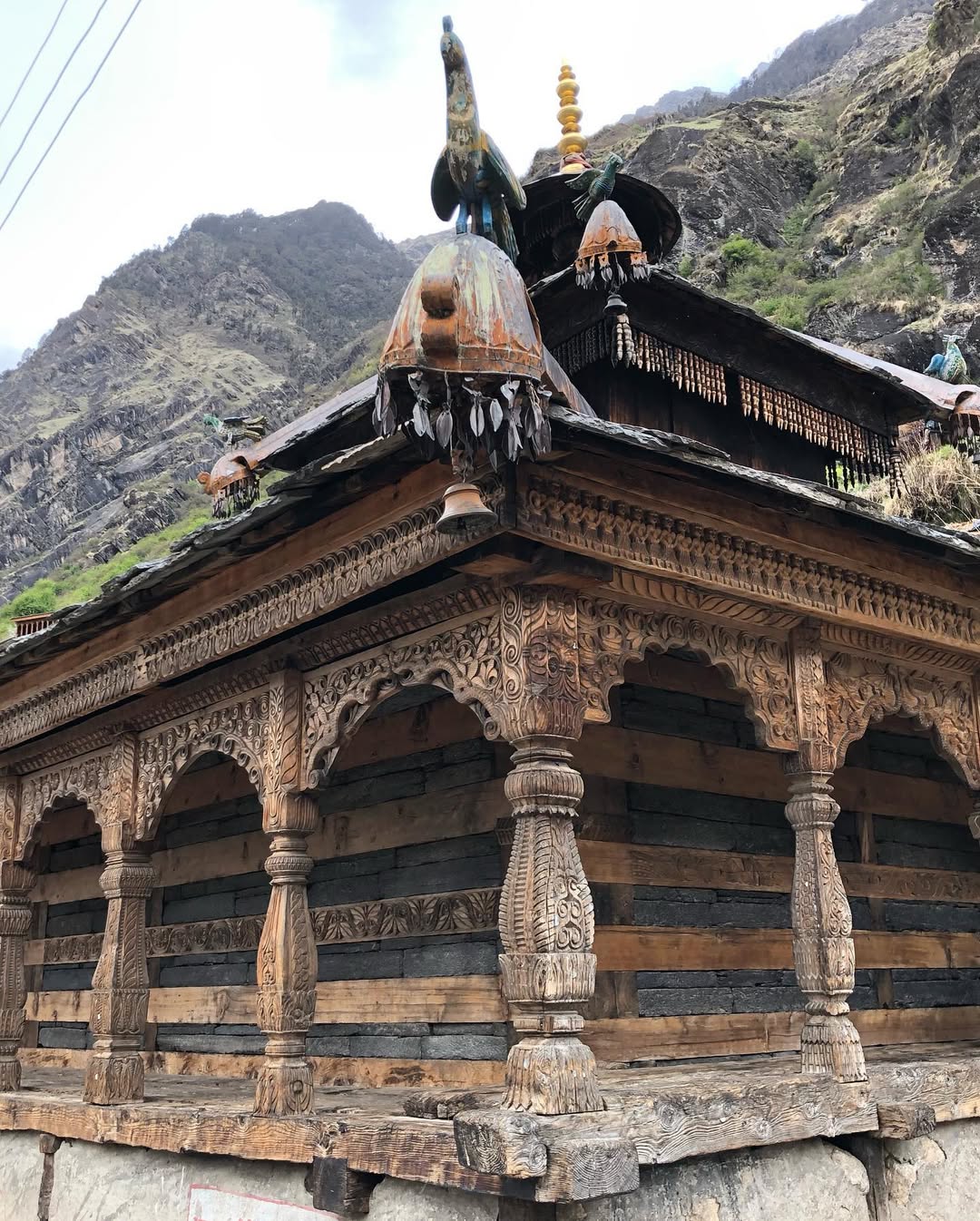
The park has several attractions and a variety of environments, including deep woods and alpine meadows. Har Ki Dun Valley, Ruinsara Lake, Osla Village, and the twin hamlets of Taluka and Seema are some of the major attractions that are noteworthy.
1. Har Ki Dun Valley
- Duration: 7-8 days
- Difficulty: Easy to Moderate
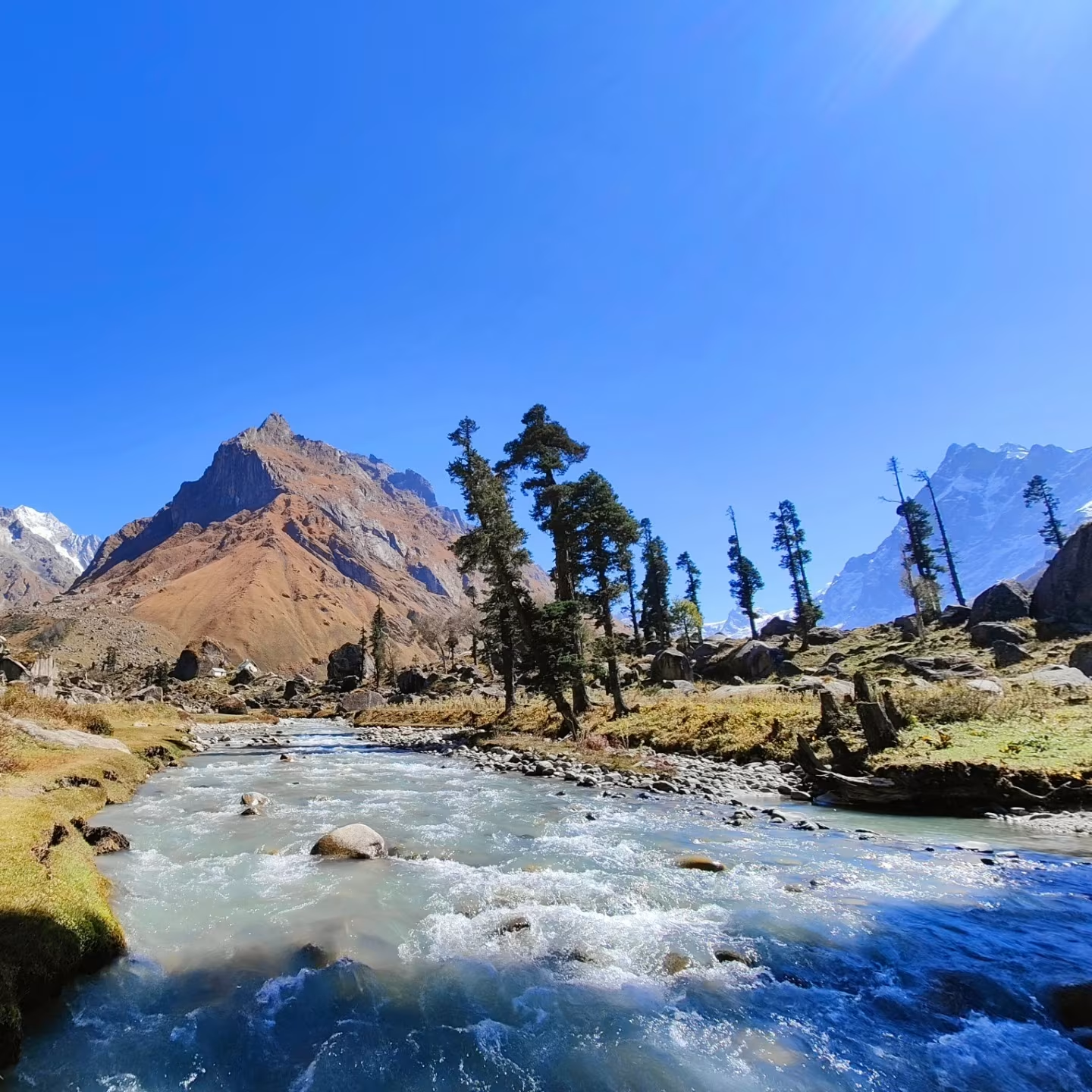
Har Ki Dun, also known as the “Valley of Gods,” is a U-shaped valley that is around 3,566 meters above sea level. A trekker’s delight, this charming valley is surrounded by snow-capped hills and alpine greenery. Magnificent views of Bandarpoonch, Kala Nag (Black Peak), and the Swargarohini group of peaks can be seen from the Har Ki Dun trail. The mythology surrounding the valley is equally rich; it is said that the Pandavas used this path to reach heaven. Trekkers can witness the Himalayan monal, musk deer, and a variety of vegetation, among other examples of the region’s tremendous biodiversity.
2. Ruinsara Lake
- A high-altitude lake (3,600 m) surrounded by snow peaks.
- Sacred for locals and a camping spot for trekkers.
In the middle of the Garhwal Himalayas is the tranquil high-altitude glacier lake known as Ruinsara Lake. The lake, surrounded by rhododendron trees and verdant alpine meadows, provides hikers with a peaceful haven. The roughly 27-kilometer hike to Ruinsara Lake deviates from the main Har Ki Dun track near Osla Village. Trekkers can see animals, including brown and black bears, as they cross glacial moraines along the route. The lake itself offers expansive views of the magnificent highlands and is frequently embellished with floating icebergs that mirror the nearby peaks.
3. Osla Village
- A traditional Himalayan village with wooden houses.
Situated at an elevation of around 2,590 meters, Osla is a charming Himalayan hamlet. The Har Ki Dun hike passes via this cultural waypoint, which is around 14 kilometers from Taluka. The old Someshwar Temple, devoted to Lord Shiva, and the village’s traditional wooden homes are its most famous features. A traditional way of life is upheld by the people of Osla, who work mostly in agriculture and livestock farming. The simplicity of mountain life, the kind hospitality of the locals, and cultural immersion are all available to visitors.
4. Taluka and Seema
- Starting points for Har Ki Dun and Bali Pass treks.
Taluka is the starting point for the trek into the center of Govind Pashu Vihar National Park and the closest roadhead for the Har Ki Dun. Located at an elevation of around 2,100 meters, Taluka can be reached from Sankri by a motorable road. Trekkers set out on a track that winds alongside the Supin River and through thick forests from Taluka. Seema is a popular camping spot for hikers and is a few kilometers ahead. Both settlements are good places to settle down before going higher because they provide simple lodging.
Prominent Peaks
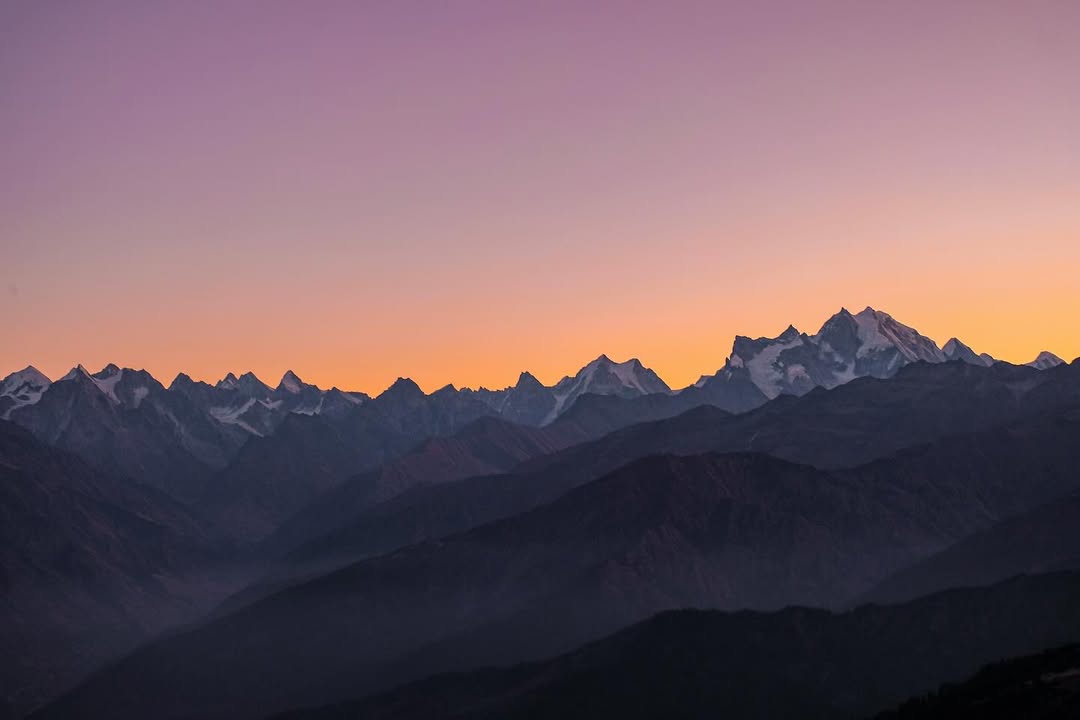
Rising from the isolated Garhwal region, the conspicuous mountains of Swargarohini, Black Peak (Kalanag), and Bandarpunch characterize the rocky skyline of this protected area and are extremely important in terms of climbing, geology, and mythology.
1. Swargarohini (6,252 meters)

Perhaps the most recognizable mountain in Govind Pashu Vihar National Park is Swargarohini. It is the highest and most famous mountain in a four-peak massif. The phrases Swarga (heaven) and Rohini (ascent) in Sanskrit give the peak its name, which translates to “ascent to heaven.” It has great spiritual significance since it is thought to represent the same path the Pandavas took on their last quest for redemption in Hindu mythology.
Sharp, pyramid-like ridges, snow-covered sides, and steep glaciated slopes define the peak’s topography. Taking up the surrounding area, it rises sharply over the Ruinsara Valley. Avalanches, icefalls, and unstable terrain make Swargarohini a formidable technical challenge for climbers despite its beauty.
2. Black Peak / Kalanag (6,387 meters)
Black Peak is the tallest peak in the Govind Pashu Vihar area. It is also known locally as Kalanag, which translates to “Black Cobra.” This peak receives its name from its dark, dark aspect that resembles the hood of a cobra. Despite being a part of the Bandarpunch massif, its height and dominant presence make it stand out.
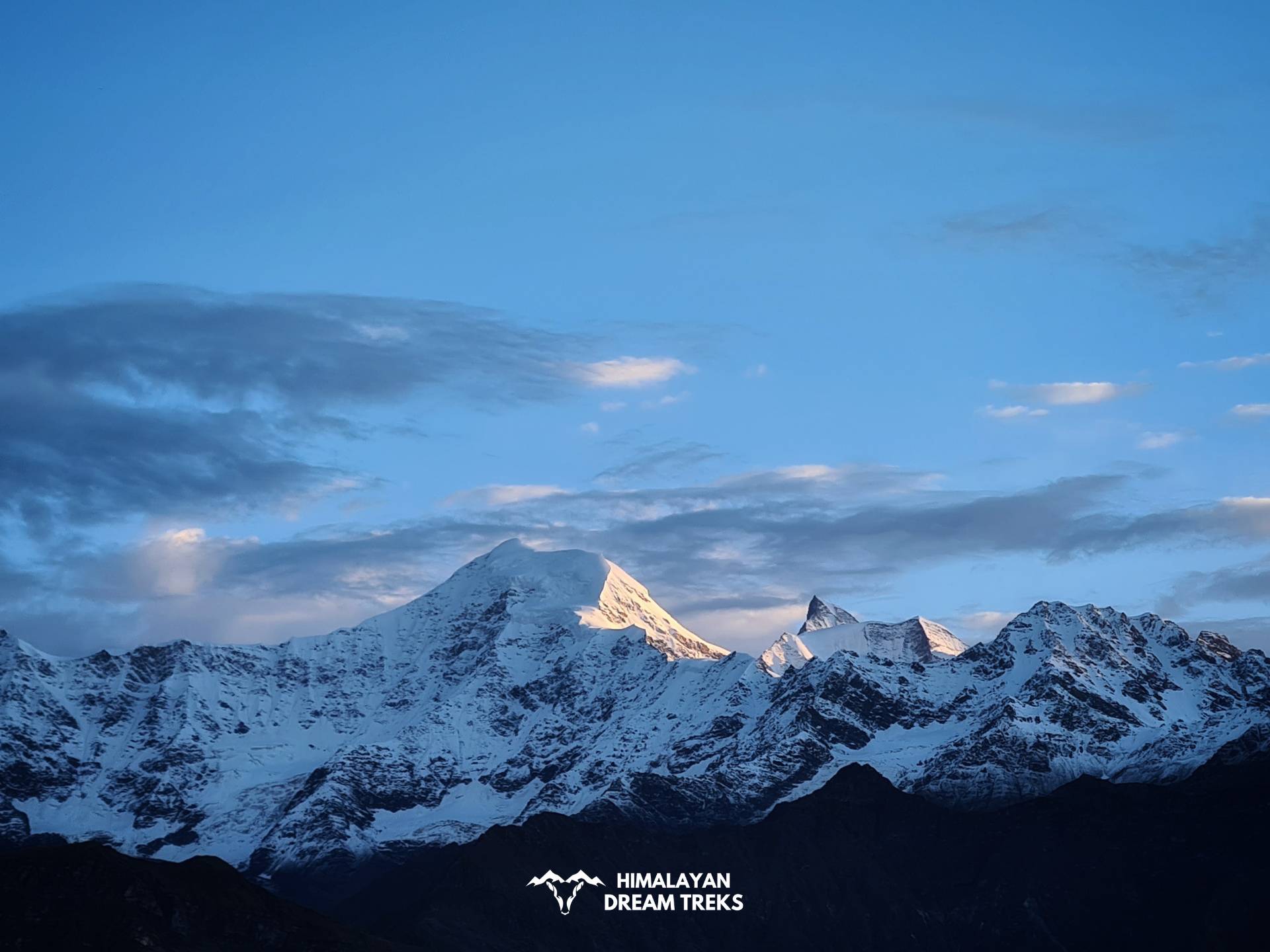
A well-known hiking and mountaineering destination, Kalanag is especially well-liked by Indian expeditions as a starting point for tough, high-altitude climbs. Ropes, crampons, and other alpine equipment are necessary due to the difficult, steep, and icy terrain that leads to the top.
The typical climbing path winds past glaciers, moraines, and verdant alpine meadows before transitioning to steep ridgelines and crevassed slopes close to the summit.
3. Bandarpunch (6,316 meters)
West of Swargarohini and south of Kalanag, Bandarpunch, also known as Bandarpoonch, is another impressive peak in the Garhwal Himalayas. This mountain is associated with the epic Ramayana, where Hanuman is said to have put out his blazing tail after setting Lanka on fire. The name literally means “Monkey’s Tail.”

Bandarpunch I, also known as White Peak, and Bandarpunch II, also known as Kala Nag/Black Peak, make up the twin peak formation known as Bandarpunch. While still a challenging trek, Bandarpunch I is a snow-covered summit that offers expansive views of the Yamunotri glacier and is regarded as somewhat less technical than Kalanag.
On clear days, it is visible from far places like Mussoorie and plays a significant part in the Yamuna River’s watershed.
Permits, Entry Fees, and Regulations for Govind Pashu Vihar National Park
The delicate habitat and protected status of Govind Pashu Vihar National Park necessitate meticulous preparation with regard to permits and laws. To guarantee a seamless visit, below is a thorough guide:
Entry Fees & Permit Requirements
- Indian Nationals: ₹150 per person (valid for 3 days)
- Foreign Nationals: ₹600 per person (valid for 3 days)
- Camera Charges: ₹200 (still), ₹5,000 (professional video)
Students can receive a 50% discount when they provide their ID from an educational institution.
Mandatory Permits
- Forest Entry Permit: Available at the Sankri checkpoint or the Divisional Forest Office in Purola.
- Every trail outside of Sankri requires a trekking permit.
- Permit to Photograph Wildlife: For telephoto lenses longer than 200mm.
How to Apply for Permits
- Online: Via the Uttarakhand Forest Department website (three days before submission)
- On-site: Sankri Forest Check Post, which is open every day from 7 AM to 3 PM.
Required Documents:
- Two passport-sized pictures
- A government-issued ID
- A medical fitness certificate (for high-altitude excursions)
Important Regulations
- Limits on Group Size: No more than six hikers per guide
- Restricted Areas: Bandarpunch Glacier (year-round) and Ruinsara Lake (October–March)
Prohibited Activities:
- Plastic products (fines up to ₹5,000)
- Drones without special permission
- Collection of rocks and plants
Particular Points to Remember
- Additional mountaineering permits are needed for winter visits (December to February).
- Scientists must seek research permits from the Wildlife Institute of India.
- Last-Minute Modifications: Verify weather-related closures with the forest office.
Pro Tip: Carry multiple photocopies of permits, as mobile networks are unreliable in the park. For a service charge of ₹200 to ₹500, local guides can help with last-minute paperwork.
Thirty percent of payments go directly into local community forest preservation projects, which help control tourism while financing conservation. Since restrictions are modified seasonally, always confirm the most recent version.
How to Reach
- Nearest Airport: Dehradun (200 km).
- Nearest Railway Station: Dehradun (190 km).
- Road: Delhi → Dehradun → Purola → Sankri.
A multi-stage trip across the rugged terrain of Uttarakhand is required to reach Govind Pashu Vihar National Park. Dehradun, the closest large city with train and airport access, is where the most popular route starts.
From Dehradun, visitors drive 180 km (7-8 hours) by road through Mussoorie, Nowgaon, and Purola to Sankri, the final motorable settlement and base camp, before entering the park. Trekking (18 km to Taluka) or, if allowed, renting local jeeps are the only options for the last stretch from Sankri to the park.
The path beyond Sankri frequently becomes impassable owing to severe snowfall during the winter months of December through February. There are more routes from Himachal Pradesh across the Sangla Valley, but these require specific permissions.
Wrapping up
A Himalayan gem, Govind Pashu Vihar National Park provides a unique combination of untainted wilderness, exhilarating adventure, and essential conservation initiatives.
Every feature of this park narrates a tale of ecological splendor, from the secretive snow leopards that patrol its high-altitude lands to the colorful alpine meadows of Har Ki Dun.
The park guarantees an amazing experience whether you’re hiking through old woods, seeing uncommon creatures, or just taking in the breathtaking views of Bandarpunch Peak.
Plan Your Adventure Today!
Are you prepared to experience the wonders of the Himalayas? Govind Pashu Vihar is a place for environment lovers, animal enthusiasts, and hikers alike. So plan your permits, gather your belongings, and set off into one of the most magnificent national parks in India.
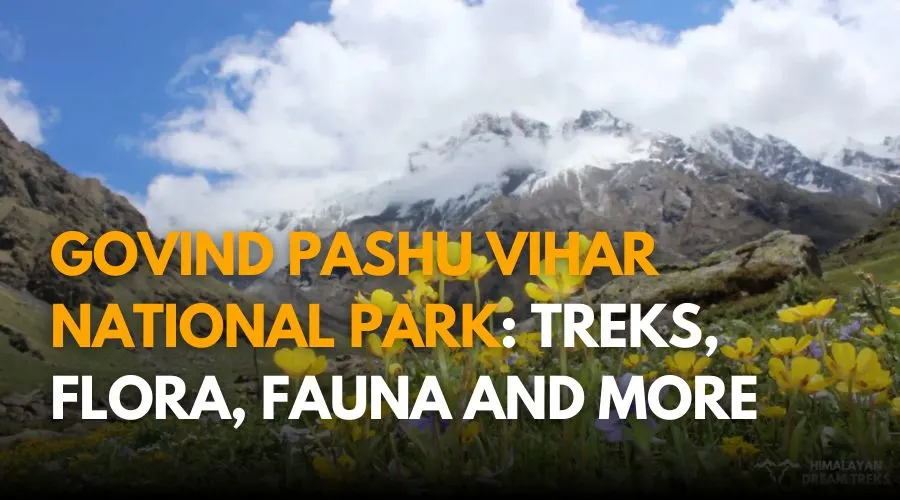
Leave a Comment